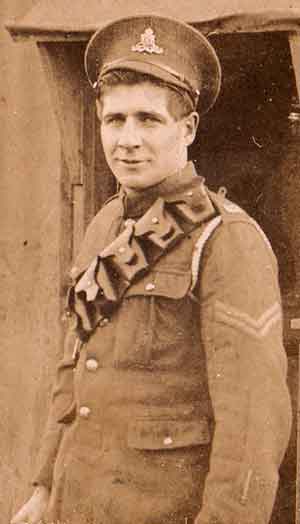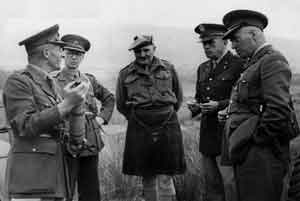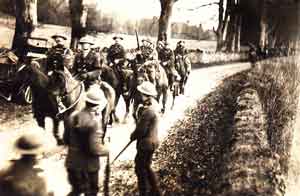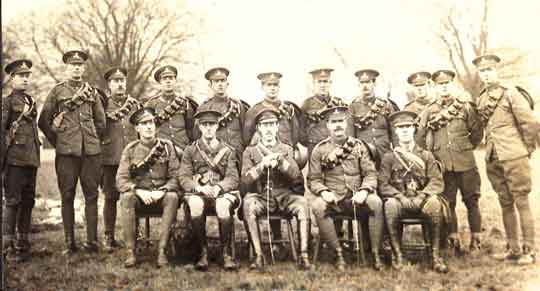By Mark McLaughlin

The ending of the Irish Civil War with the order to ‘dump arms’ in May 1923 allowed the new National Army of the Irish Free State to concentrate on the creation of a professional army capable of serving the needs of the new state. An army of 7,000 had expanded during the course of the Civil War to over 55,000, made up of a mixture of experienced and inexperienced men, including former IRA Volunteers and ex-British Army soldiers. The ending of the Civil War saw a process of rapid demobilisation that reduced the army to 30,000 officers and men by January 1924 and ultimately to a peacetime establishment of 18,000. The replacement of many former IRA men by those who had done much less for Ireland contributed to the army mutiny of 1924 but was a necessary measure for retaining the relevant experience in the development of a modern army.
IRISH ARMY CAREER
My grandfather, James McLoughlin, was amongst those who ‘had done less for Ireland than most’ during the War of Independence but he is credited with being one of the influential officers in the development of the National Army, which had lacked proper military discipline during the Civil War and was now required to equip itself with the basic requirements of military discipline and training. He is listed by Henry Harris in Irish regiments in the First World War as one of the key ex-British Army men in the new army:
‘Jack Hunt, the well-known Brigadier who commanded the 10th Irish Brigade … Mulcahy who formed the Artillery Corps and later became Chief of Staff (the only ex-British army man to achieve the post); W.R. Murphy who became a Major-General, was G.O.C. Kerry Command, Dunphy, Lawlor, Barry, McLoughlin, Russell and Fitzmaurice.’
McLoughlin had enlisted in the National Army at Kinsale on 24 August 1922 and was appointed second lieutenant in command of Innishannon outpost in October 1922 by Major-General Emmet Dalton ‘as a mark of appreciation for the valuable services you have rendered whilst under my command’. After the Civil War he was appointed to the inspections staff at Portobello Barracks, where it was noted that he was an expert in machine-gunnery. He served with the Artillery Corps from August 1924 and was appointed commander of No. 1 Battery before serving as an instructor in the Military College, Curragh, in the 1930s. He became a ‘foot slogger’ in command of 3 Brigade in Cork during the Emergency years under Major-General Michael Joe Costello before appointment as Director of Artillery from 1949 until his retirement in 1955.
BRITISH ARMY SERVICE

While McLoughlin’s Irish army career is well documented, his service in the British Army has taken many years to establish, hampered by the destruction of service records during the 1940 Blitz in London. James McLoughlin was born at Kilcorney, Enfield, Co. Meath, on 7 November 1895, and worked as a valet at Clongowes Wood College, Co. Kildare, before enlisting in the Royal Garrison Artillery (RGA) on 3 November 1915. His enlistment coincided with a recruitment campaign for men to serve with the new heavy and siege artillery batteries being formed for the much-anticipated Somme offensive of 1916. Surviving war diaries and casualty lists show that his First World War experience was not with heavy artillery but with an ancient weapon adapted for trench warfare—the trench mortar. Following a quick course of instruction at the trench mortar school at St Venant, Pas-de-Calais, he was in action on the front line at Neuve Chapelle in March 1916 with Y/35 Trench Mortar Battery of 35 Division, lobbing 60lb. ‘toffee apple’ mortar shells into the German lines. This was a hazardous occupation with significant casualties caused by counter battery fire and premature explosions of the mortars. He would serve through the Somme and was at Arras during the winter of 1916. On St Patrick’s Day 1917, near the village of Chilly, the war diary records that, ‘during firing, one mortar under Corporal McLoughlin had a premature, the emplacement being destroyed and the Corporal wounded in the head’, resulting in hospitalisation and leaving him with shrapnel in his head for the rest of his life.

He returned to the Western Front for at least part of the Battle of Passchendaele and would see out the rest of the war in northern France. While lecturing in the Military College in the 1930s he gave firsthand accounts of the impact of artillery and, according to the late Michael Gill, was reputed to have been the hero of a famous field artillery exploit involving the rescue of artillery pieces from under the noses of the Germans. He re-enlisted in January 1919 and met his future wife, Margaret Molloy, in Liverpool, where he was serving during civil unrest in August 1919.
He rarely spoke of his wartime experiences to his family but did give some snippets of information to his children. He was right to be circumspect. His army file, held in the Military Archives, Dublin, contains an undated letter from the West Cork TD John Prior suggesting ‘that during the Black and Tan days he was an agent of some kind or another of the British in some place that Prior does not state’. As late as the 1950s, as colonel and Director of Artillery he had to confirm in writing that he never claimed IRA service during the War of Independence, while an annual assessment report by Major-General Hugo MacNeill comments on his ‘NCO mentality from his days in the British Army’—a pointed put-down to a senior army officer. One of the earliest documents that he completed in 1923, however, references service with 9 Battalion, 1 Cork Brigade IRA, in 1921–2 in the Kinsale area. There is no other evidence for this service, which I can only assume was included to improve his chances of being retained during the post-Civil War demobilisation process.

1921 UK CENSUS
The release of the United Kingdom 1921 census last year gave me answers to many of the questions that I had been unable to answer earlier. The census, taken on the eve of the Truce in June 1921, included the British Army in Ireland, with McLoughlin stationed temporarily with 31 (Cork) Fire Command on Bere Island, while his parent unit, 7 Brigade, Royal Garrison Artillery, was stationed at Moore Park, Kilworth, Co. Cork. Some further research with the Royal Artillery Museum has confirmed that he was a lance-sergeant with 26 Battery RGA. His unit at this time was involved in mounted patrol training, scouting, advance and rearguard action, and from October 1920 in armed mounted parties sent out to round up rebel forces. Surviving photographs in the Imperial War Museum show 7 Brigade carrying out searches in Ballyduff and Mocollup, Co. Waterford, and general searches in Fermoy in January 1921. The census is striking in that the vast majority of the soldiers, contrary to popular belief, were nineteen- and twenty-year-olds and were not veterans of the First World War. Furthermore, there were other Irishmen amongst these units, including men from Cork, Kilkenny and Waterford.
Many years ago the late Colonel Cyril Mattimoe told me a story that he had heard my grandfather recall about Seán Moylan, the renowned guerrilla fighter and commander of the IRA’s second Cork Flying Column. My grandfather claimed to have been involved in the capture of Moylan, who was the target of numerous operations. Moylan reputedly said to him, ‘If I had my Peter the Painter, I would have done for you’. My grandfather retorted, ‘You can have your Peter the Painter and we can fight it out’. Moylan was captured by the British Army in May 1921 and by the National Army in 1923. It is possible that McLoughlin could have been involved in the capture of Moylan with either army!
James McLoughlin completed his service with the British Army with ‘Q’ Coast Battery at Fort Camden, near Crosshaven, Co. Cork, on 13 July 1922 and enlisted in the National Army at Kinsale, where his commanding officer, Jephson O’Connell, was a former British Army chaplain. His first son, Micheál, was born at Kinsale in January 1923. As adjutant with 59 Battalion at Kinsale, many of the surviving weekly reports from early 1923 submitted to Dublin were returned by him, recording bicycle patrols, raids, robberies and arrests in the district. He recounted some anecdotes to his son Paddy about incidents such as nearly being shot by one of his own men while crossing a gap in a hedge one night, or tying prisoners onto the front of their car and telling them to hold on tight as they brought them back to barracks. Even in later years, however, whenever he was asked about his days in the British Army he would not reveal anything. Considering that he died in May 1966, shortly after the 50th anniversary of the 1916 Rising, it is easy to see why he was tight-lipped. Despite serving in the Defence Forces for 33 years, he did not have a military funeral—at his own request; he was of the view that he was not deserving of one.
Mark McLaughlin is a senior executive officer with Kildare County Council.
Further reading
H.E.D. Harris, Irish regiments in the First World War (Cork, 1968).
M. Valiulis, Almost a rebellion: the Irish Army mutiny of 1924 (Cork, 1985).
